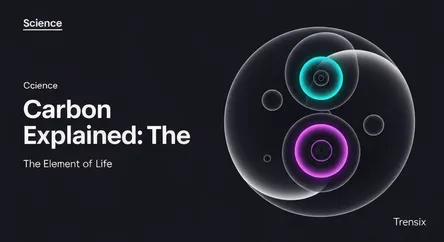Science
Carbon Explained: The Element of Life

An essential guide to carbon, the fundamental element for life and the central player in the global discussion on climate change.
What is it?
Carbon is a nonmetallic chemical element with the symbol C and atomic number 6. It is the fundamental building block for all known life on Earth, forming more compounds than any other element. Carbon's unique ability to form strong bonds with itself and other elements allows for a vast diversity of organic molecules. In its pure form, it exists in several allotropes, including graphite, one of the softest known substances, and diamond, one of the hardest. Carbon is the fourth most abundant element in the universe by mass.
Why is it trending?
Carbon is a major topic of discussion due to the atmospheric rise of its most common compound, carbon dioxide (CO2). Human activities, primarily the burning of fossil fuels like coal and oil since the Industrial Revolution, have significantly increased CO2 concentrations. This increase is the primary driver of climate change, as CO2 is a potent greenhouse gas that traps heat in the atmosphere. Global CO2 levels have risen by over 50% since pre-industrial times, leading to record-high atmospheric concentrations and accelerating global warming.
How does it affect people?
Carbon is essential to life; we are carbon-based lifeforms and rely on the carbon cycle. However, the excess of atmospheric CO2 has profound effects. It intensifies the greenhouse effect, causing rising global temperatures, which leads to extreme weather events and sea-level rise. On a more direct level, high concentrations of CO2 can impact human health, causing respiratory issues, headaches, and dizziness. The societal response to carbon emissions is reshaping industries, economies, and policies worldwide, affecting everything from energy production to transportation.